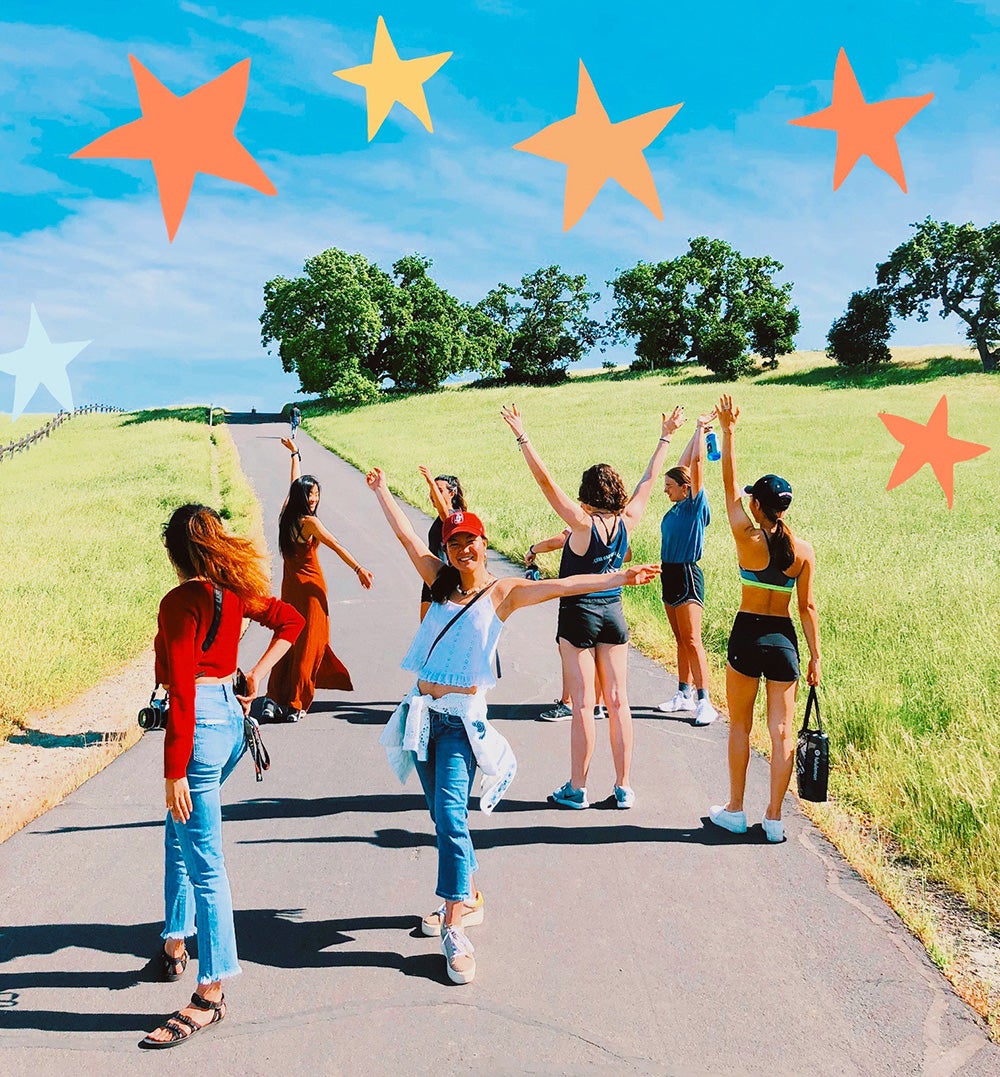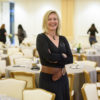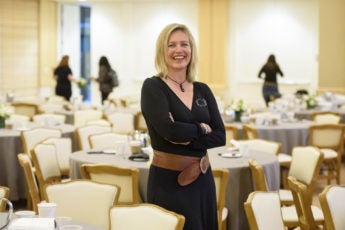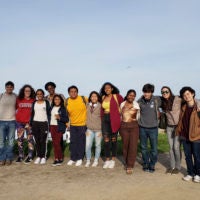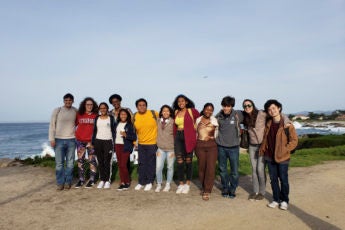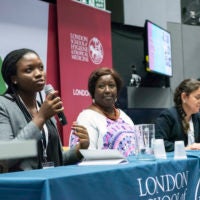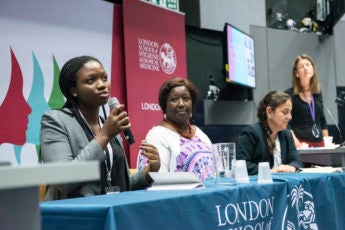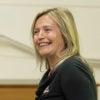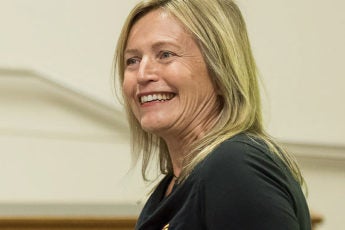Recognizing and empowering women in STEM at Stanford
Everyone loses when not all good ideas are heard – whether it’s missed perspectives, overlooked solutions or unanswered questions. That’s why more than a dozen programs at Stanford are supporting women in STEM fields.
Although women are graduating with science degrees in increasing numbers, their representation diminishes by the time they reach more senior levels. To give women a sense of belonging in STEM departments – and ultimately ensure the world benefits from their ideas and insights – over a dozen groups at Stanford University are pushing their communities to amplify and encourage the influence of women in STEM.
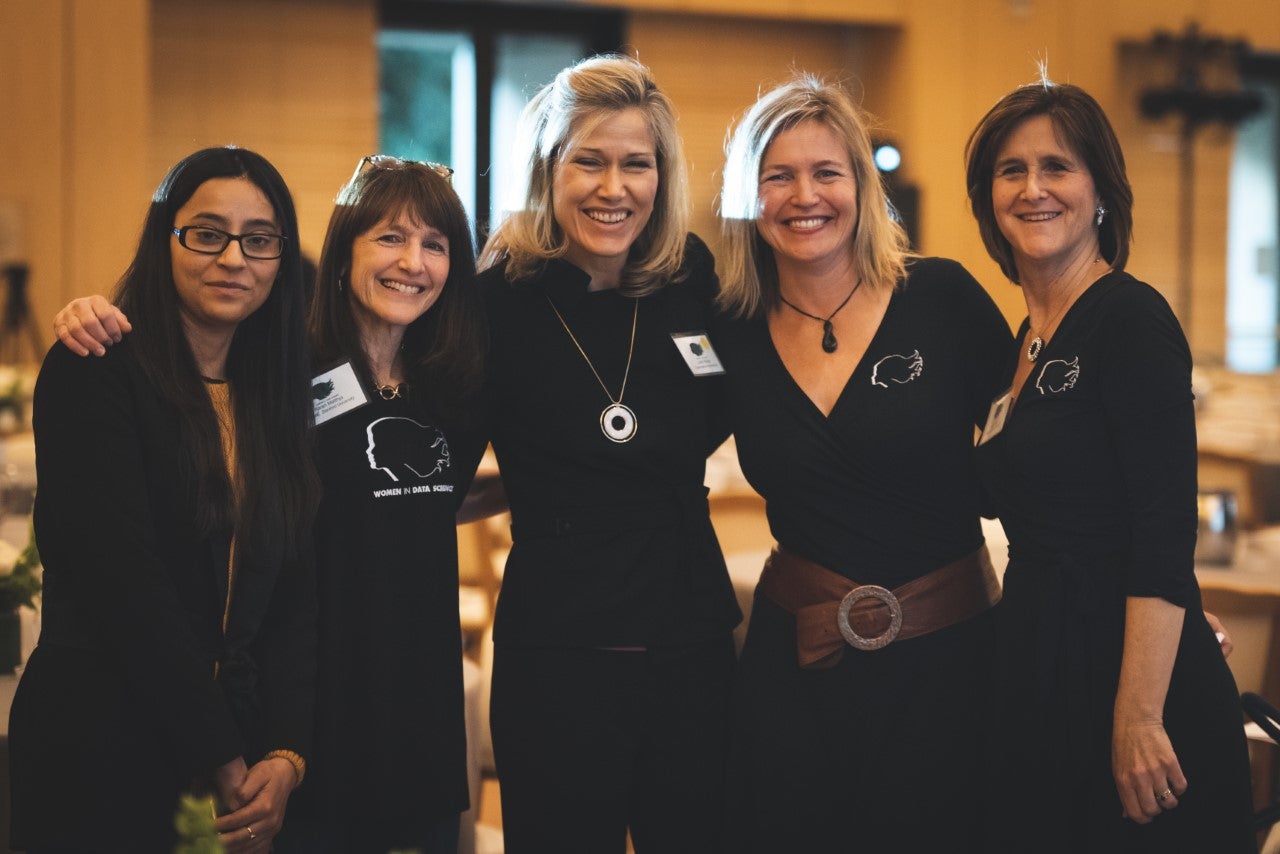
Speakers, organizers and attendees of the Women in Data Science conference in 2018, including Margot Gerritsen (second from right), who led the meeting. (Image credit: L.A. Cicero)
One such group, led by Margot Gerritsen, professor of energy resources engineering in the School of Earth, Energy and Environmental Sciences, runs an international network of data science conferences that feature woman panelists and speakers. They will have their fifth Women in Data Science Conference on March 2.
“We do not just want work with women at the exclusion of others. We do want to promote outstanding work by outstanding women, and show women they are not alone in this field.” Gerritsen said. “Being in a room with 400 other women with outstanding women presenting on stage is an eye-opener for everyone because none of us have been seeing enough of these women and their fantastic research through traditional venues.”
As part of Stanford’s Long-Range Vision, the Inclusion, Diversity, Equity and Access in a Learning Environment (IDEAL) initiative is working across the entire campus community to advance the university’s commitment to the values of diversity and inclusion.
“Promoting diversity at Stanford is critical for ensuring our intellectual strength and ability to contribute to our communities in meaningful ways. We want to make sure that all members of the campus community have broad access to the opportunities and benefits of the university,” said Provost Persis Drell. “The number of women undergraduates in STEM subjects at Stanford is increasing – which is great – but there is still a large disparity for women entering these fields professionally. And women leave their STEM-based careers at a much higher rate than men. These campus organizations help call attention to these issues.”
Last year, Drell produced a statement on diversity and inclusion at Stanford, to clearly articulate why these values are critical to the university.
Centering women, welcoming all
Stanford’s Women in STEM groups focus on supporting women, but are open to anyone who shares the goal of promoting a supportive and encouraging environment for women.
“The default is for men to feel more wanted and for women to doubt whether they should attend an event or speak up during a discussion. It’s important to have some spaces where we reverse that expectation and explicitly tell women that they belong here,” said Julia Olivieri, a graduate student in the Institute for Computational and Mathematical Engineering who is co-president of Women in Mathematics, Statistics and Computational Engineering (WiMSCE).
Olivieri founded WiMSCE with her co-president, Allison Koenecke, also a graduate student in the Institute for Computational and Mathematical Engineering, inspired by Gerritsen’s efforts to elevate women in their institute. As with many similar groups, they aim to create an environment where women don’t have to worry about being the spokesperson for their gender or about bringing up issues specific to being a woman in STEM.
“Oftentimes you’re the only woman in the room, so you’re scared that if you say something wrong, not only will they think you’re stupid, they’ll think that all women are stupid,” said Koenecke. “These women-centric groups, like WiMSCE, are a place for women to gain experience in asking questions and not be afraid to fail.”
The Women in STEM groups at Stanford support many activities, bridging professional, personal and cultural enrichment. They host networking and career development events, where attendees can find mentors, meet with industry professionals and learn how to ask for raises. They have informal community-building events, like paint nights and hangouts to discuss the week’s highs and lows. Hermanas in STEM and the Society for Advancement of Chicanos and Native Americans in Science co-host Háblame, a catered lunch at the School of Medicine where everyone speaks Spanish.
Through various activities, these groups do delve into specific issues that tend to go hand-in-hand with existing as a woman in academia, such as imposter syndrome (the idea that you don’t deserve your success, even in the face of clear evidence that you do) and the “mom effect” (the expectation that as teachers, they should be more nurturing than teachers who are men). Many of them also do outreach to K-12 schools and local community colleges to highlight the opportunities for – and simply the existence of – women in these fields.
“I went to community college before transferring and was fortunate enough to learn about programs that encourage women and minorities in science,” said Priscilla San Juan, a graduate student in biology and president of Stanford Hermanas in STEM. “We can make an impact just by being present, so that these young students can see that there’s more than one kind of scientist.”
Elevating others
Many of Stanford’s groups supporting women in STEM are having an impact outside the campus community. This year, WiDS will help facilitate over 200 conferences in 60 countries and run a datathon with registrants from 85 countries. Stanford Womxn in Design had over 350 people attend their fall conference and hosted their first makeathon in February. And on March 5, Hermanas in STEM will have a booth at the “Women in Science” Nightlife event at the California Academy of Sciences.
Building on those successes, several groups are looking to better support additional minority populations.
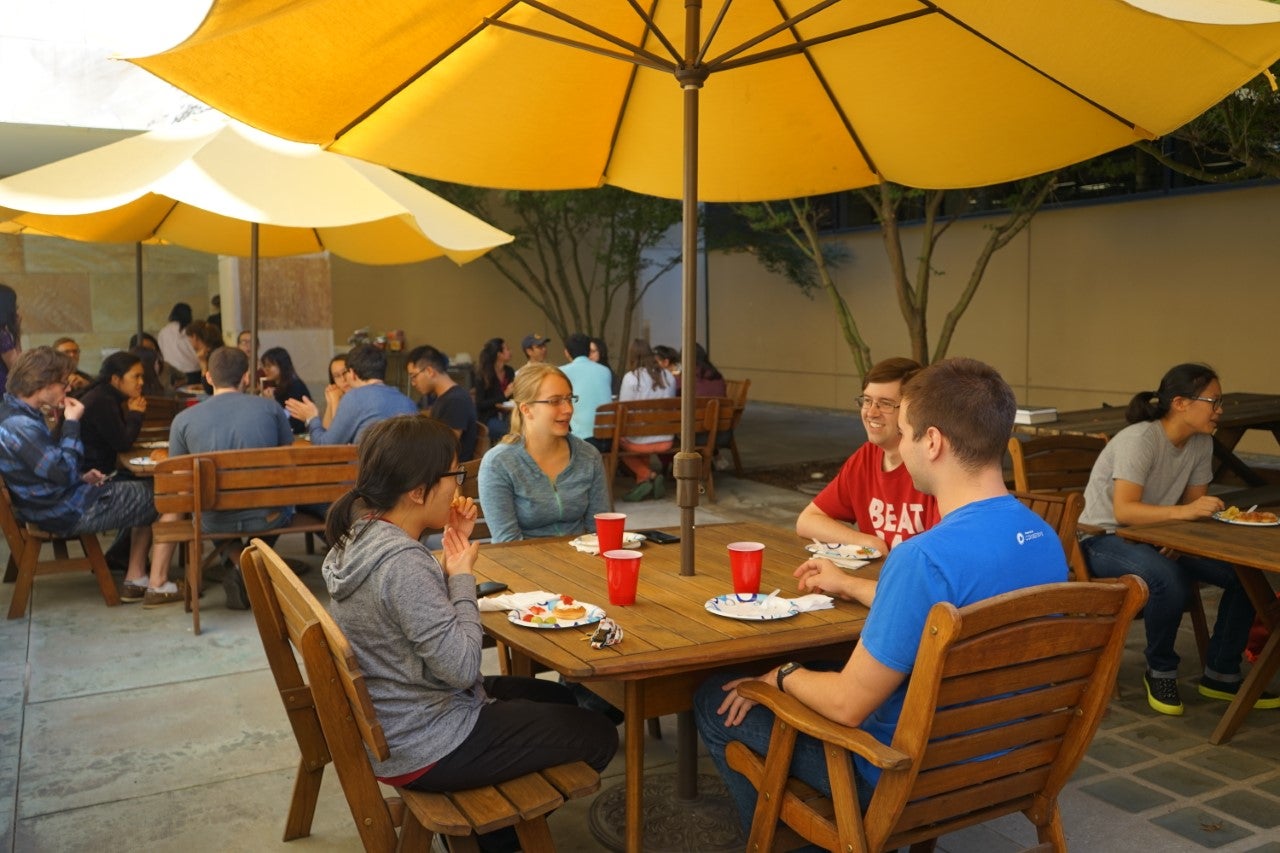
Students meet and eat at the Stanford Women in Electrical Engineering welcome party. (Image credit: Anqi Ji)
“As we were searching for a diverse lineup of conference speakers, we were faced with the harsh reality – the rest of the field isn’t really elevating womxn of color. So we are really pushing to be more inclusive,” said Nicole Orsak, ’21, a management science and engineering major and co-president of Stanford Womxn in Design. “We’ve also changed the ‘e’ in our name to an ‘x’ to make it clear that we welcome all womxn and, really, anyone who is an ally to womxn.”
Hermanas in STEM is also considering a name change in order to reinforce that their membership goes beyond women and beyond Latinx people. Their central priority will still be focusing on support of Latinas in STEM but that includes working with a diverse community and recognizing the overlapping marginalizations of women, Latinx people and Latinas in STEM.
“Everyone is welcome in Hermanas in STEM. All we ask is that people advocate for Latinx folks in academic spaces because we don’t always feel welcome or that we belong,” said San Juan. “I know it’s not easy.”
Gerritsen, too, acknowledges that the success of WiDS sets the stage for a more complex effort to promote other minority groups in data science, such as women of color and gender non-binary people. For now, she’s focused on how to make the WiDS network as strong as possible, so data scientists on the local level can match – and surpass – her inclusivity efforts.
“What I’m hoping is someday WiDS conferences are totally unnecessary. I want to make it redundant. That would be great,” said Gerritsen. “We just want to normalize that there are women doing outstanding work, and hopefully that is a step toward every conference having good representation of everybody.”

